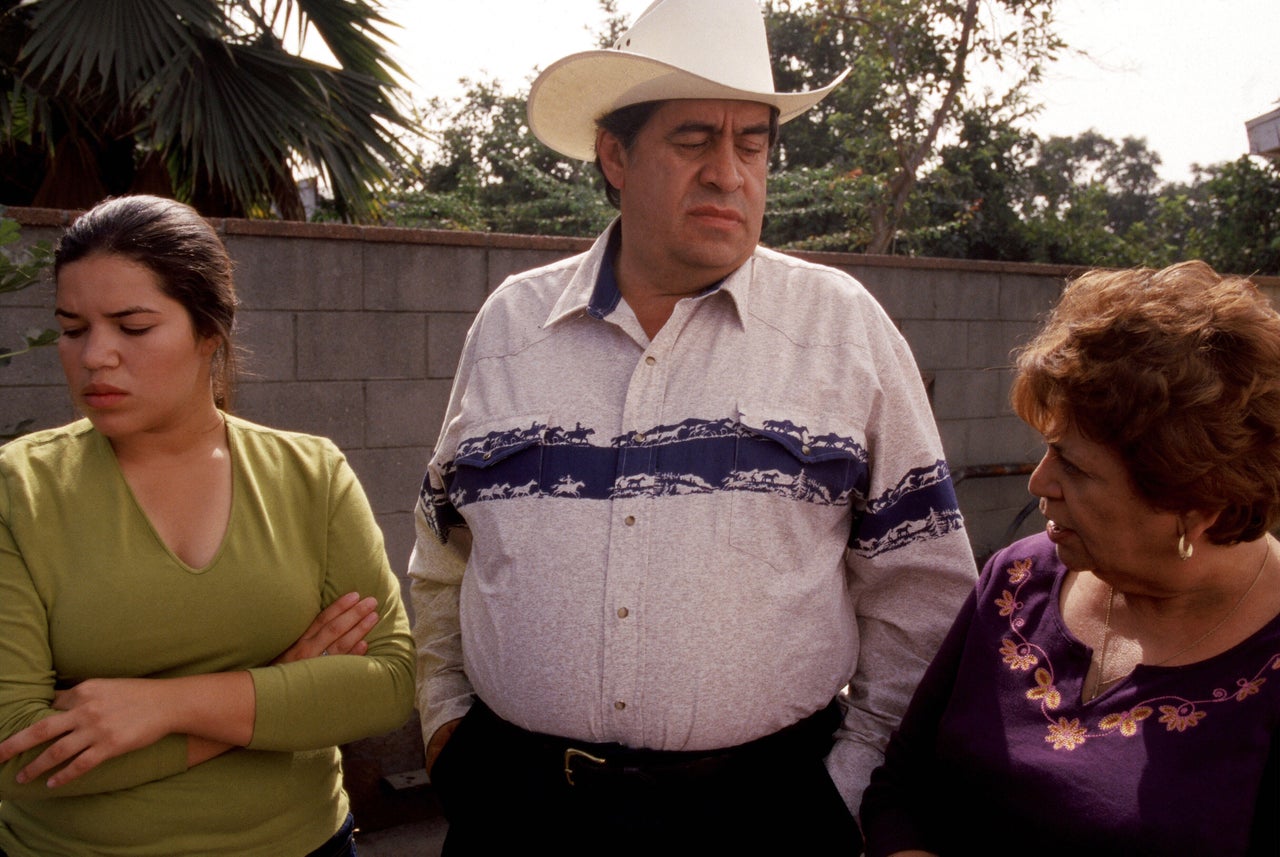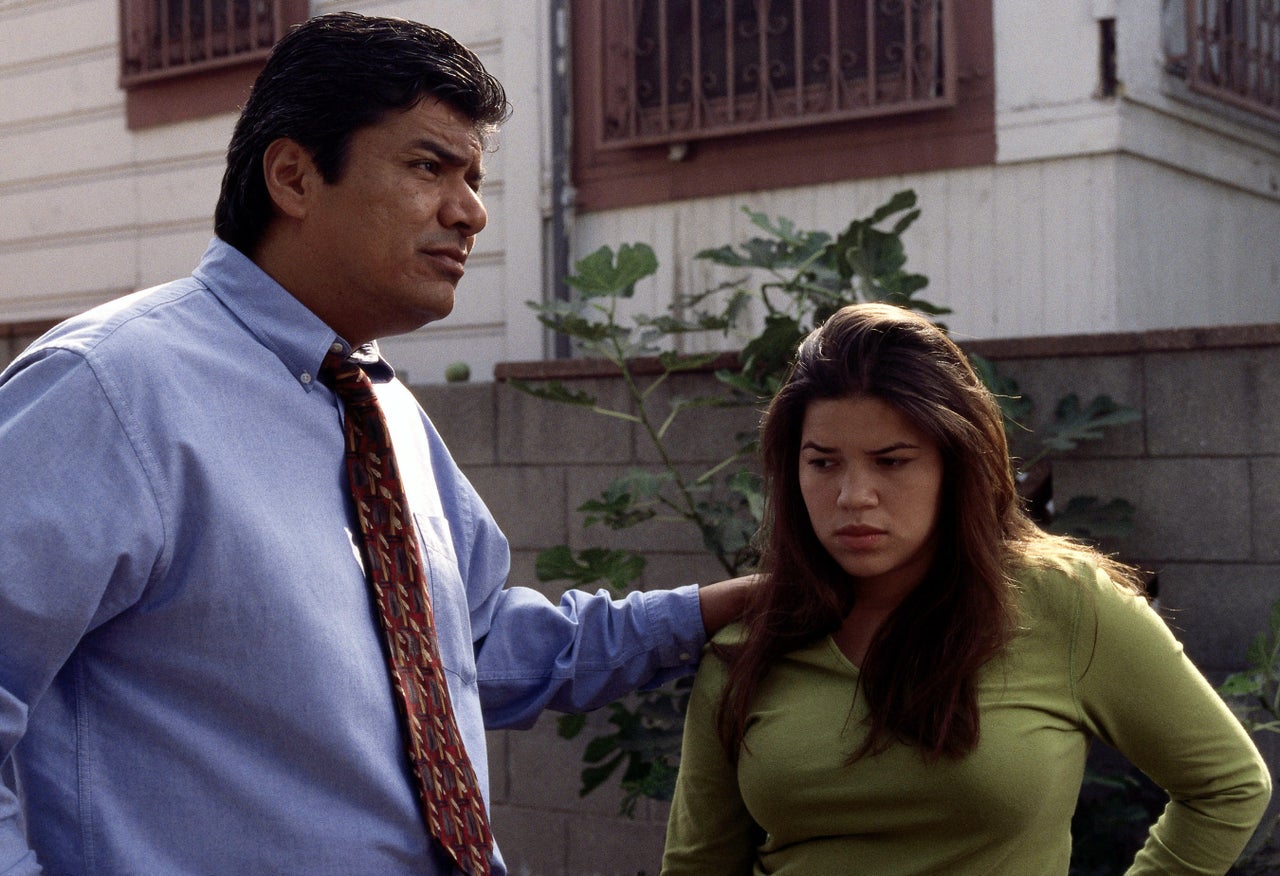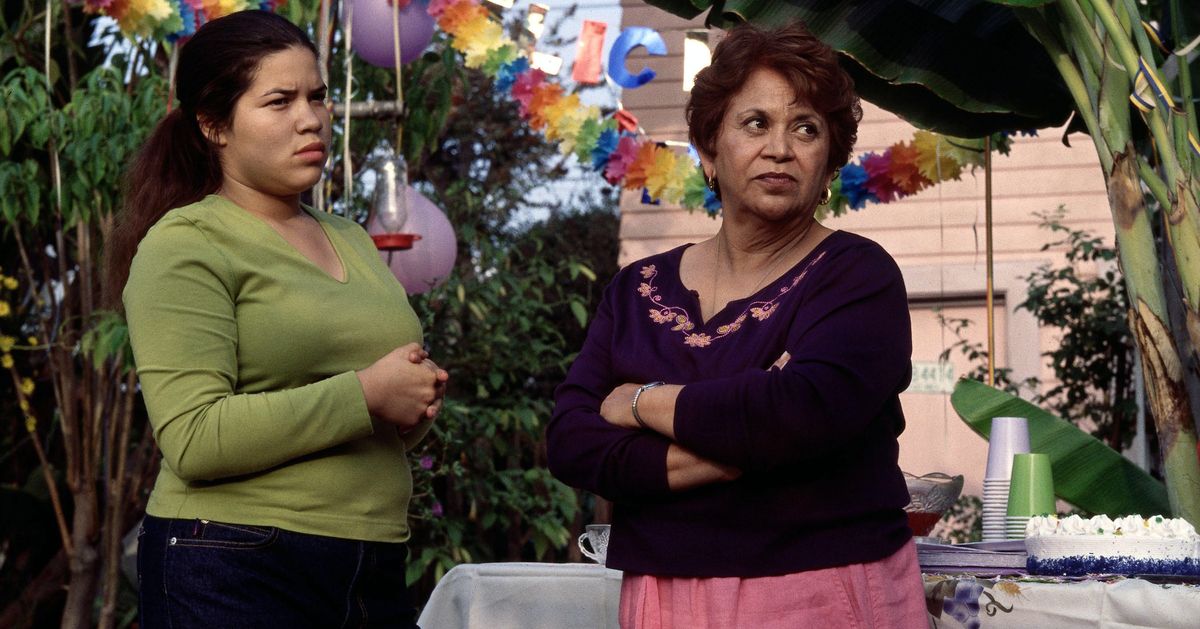Five years ago, Greta Gerwig’s directorial debut, “Lady Bird,” rattled critics and made history.
The coming-of-age film follows a Sacramento, California, teenager nicknamed Lady Bird as she contends with a strained mother-daughter relationship and her desire to attend college on the East Coast despite her family’s financial struggles. It was nominated for five Oscars and hailed as a necessary meditation on complicated family dynamics, as well as the trials and triumphs of girlhood.
Despite the overwhelmingly positive reception, however, some viewers noticed striking similarities between “Lady Bird” and “Real Women Have Curves,” released 15 years beforehand. Starring America Ferrera in her feature film debut, the movie tells the story of Ana García, a Mexican American teenager with academic prowess who is caught between her mother’s expectation that she help out with her sister’s textile factory in East Los Angeles and her own dreams of heading across the country to attend Columbia University.
There are other similarities, too. Both Ana and Lady Bird learn to express their sexuality, and neither of the films’ mothers sees her daughter off to college. Josefina López, a co-author of the “Real Women Have Curves” screenplay, told the online magazine Remezcla in 2018 that while she enjoyed “Lady Bird,” she couldn’t help lamenting that the earlier movie was not “appreciated” in the same way, despite touching upon similar themes.
While it’s true that “Real Women Have Curves” is just starting to be acknowledged as the critical classic it is — in 2019, it was the first Latina-directed film to be included in the National Film Registry at the Library of Congress — there was no comparison between the two movies for many Latinas. “Real Women Have Curves” was the first and only time (to this day, in some cases) that they saw themselves represented on screen.
As the 20th anniversary of the film approaches, some of these Latinas spoke to HuffPost about the enduring relevance and legacy of the movie.
“Wow, I’ve never seen a Latina with chichos on screen,” Emily Jimenez, who’s of Dominican descent and works in higher education, recalled thinking to herself when she first watched the film.
“According to Hollywood, you either have Sofía Vergara’s body type, where you’re curvy and super voluptuous with a flat stomach, or you’re an older woman who’s super round and plump and isn’t a main character. It doesn’t leave much room in between,” she said.
“As someone who’s plus size, being able to see that on TV was crazy to me,” Jimenez added, referring to an infamous scene in which Ana, who’s been repeatedly body-shamed by her mother, takes off her shirt in the middle of a boiling-hot dress factory in an act of defiance and self-preservation. “You’re at work and you feel comfortable doing that.”
And it isn’t just Ana who releases the burden of body shame in that scene. Her bravery amid the constant vocal disapproval of her body sets the tone for the other women in the factory — all of different shapes and sizes, with their own body hang-ups — and the women watching the film to do the same.
“Aren’t you embarrassed?” her mother, Carmen (Lupe Ontiveros), comments after Ana sheds her shirt in the sweltering heat. “Look at you — you look awful. … You would look beautiful without all that fat.”
“I happen to like myself,” Ana powerfully retorts. “I do want to lose weight, but part of me doesn’t because my weight says to everyone: ‘Fuck you. … How dare anyone tell me what I should look like or what I should be when there’s so much more to me than just my weight.’”
If the dialogue sounds like a didactic command to “love yourself no matter your size” — an entreaty of body positivity that at times rings empty, given that it ignores the real systemic barriers and discrimination fat people face — it’s not when coming from the talented Ferrera. Though the scene remains notable today, it was even more legendary in 2002, at the height of magazines peddling diet culture and the achievement of thinness by any means possible.
“I was in college when ‘Real Women Have Curves’ came out and was dealing with disordered eating,” Rosa Gutierrez, who is Puerto Rican and works in health care, told HuffPost. “After seeing that scene, I just cried.”

Gutierrez recalled gaining weight during her first year of college, only to return home for the holidays and be swarmed at the dessert table by family members instructing her to eat fruit instead of cake so she would lose the weight more quickly.
“All my life I’d been told that something was wrong with me and that I had to fix it, and if I didn’t, I wouldn’t find a husband — similar to what America Ferrera’s mom tells her in the movie,” Gutierrez said. “Even though I still struggled with disordered eating for a while after that [seeing the movie], something clicked for me — like, ‘No, wait, there is more to me than the box people have been putting me in or the snap judgments people make about me and my body.’”
Ana’s body isn’t the butt of the joke, as is so often the case with a fat person or person whose body is deemed outside the bounds of rigid and often white-centered beauty norms. The fact that “Real Women Have Curves” shows her as an autonomous young woman experiencing love and achieving her dreams during a TV and film era that gave us thin actors wearing fat suits, including Courteney Cox in “Friends” and Gwyneth Paltrow in “Shallow Hal,” was remarkable then and unfortunately is remarkable now, given that the Hollywood practice has yet to be retired.
That she’s a first-generation Latina only solidified people’s connection to the film.
“My parents came from Mexico with basically nothing,” said Erica Guerrero, who works in the service industry. “They weren’t unsupportive of me going to college like Ana’s parents were, but they didn’t understand it and couldn’t help me with the process.”
Like Ana, Guerrero had an English teacher who encouraged her to apply to college — a relationship that she said “changed my life forever.” In “Real Women Have Curves,” Mr. Guzman (George Lopez) pushes Ana to apply to Columbia, which leads to her being accepted with a scholarship.

“As a first-gen student, you feel so alone. There’s so much you don’t know,” Guerrero said. “You can be book smart, but if you don’t have the cultural capital, you’re screwed. So seeing her [Ana] gain access to this institution because she earned it, unlike her more privileged classmates, was relatable.”
For Jimenez, “Real Women Have Curves” captures the cultural clash of being the “first-born American.”
“Ni de aquí, ni de allá,” she said, referencing an expression commonly used in Latino communities to denote the feeling of not being from either the U.S. or a family’s home country.
“There’s this expectation that you will fulfill your family’s American dreams, but my version of the American dream doesn’t look like what it does for my parents,” Jimenez added.
“Theirs was the dreams of survival and the white picket fence,” she continued. “My generation sees the American dream as equity and equality, as being accepted as who we are and not having to change our language, but getting to be authentic.”
Like so many movies that center Latinos, the broader reception of “Real Women Have Curves” suffered because it was released during a time when Latinos were considered even more of a niche audience than they are now.
To be sure, the state of Latinos in Hollywood hasn’t changed significantly since the film’s release. Fewer than 6% of speaking or named characters in films from 2019 were Hispanic or Latino, according to a 2021 report from the University of Southern California’s Annenberg Inclusion Initiative. The same research found that nearly 40% of top-billed Hispanic and Latino characters in that year’s films were depicted as criminals — a stat that makes “Real Women Have Curves” even more outstanding as it shows East Los Angeles, a neighborhood that has always been portrayed stereotypically in film, with nuance and love.
But if anything, that lack of initial mainstream accolades from the Hollywood powers that be has only heightened the importance of the movie for Latinas and inspired many of us to share this pivotal film with others.
“When I was working in a high school after-school program, I showed it to the women’s group, which was a mixed group of Latinas and Black women, and most of them had never heard of it,” Jimenez said. “It really resonated with them, just like it resonated with me. I saw myself in Ana.”
If you’re struggling with an eating disorder, call the National Eating Disorder Association hotline at 1-800-931-2237.


